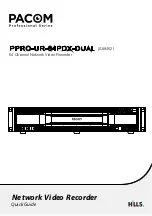
Timers
12-13
Peripherals
12.1.8 Timer Interrupts
A timer interrupt is generated whenever the TSTAT bit of the timer control register
changes from a 0 to a 1. The frequency of timer interrupts depends on whether
the timer is set up in pulse mode or clock mode.
-
In pulse mode, the interrupt frequency is determined by the following
equation:
=
period register
f
(timer clock)
f
(interrupt)
f
(interrupt)
f
(timer clock)
=
=
timer frequency
interrupt frequency
where:
-
In clock mode, the interrupt frequency is determined by the following
equation:
where:
f
(interrupt)
f
(timer clock)
2 x period register
f
(timer clock)
=
=
=
f
(interrupt)
timer frequency
interrupt frequency
The timer counter is automatically reset to 0 whenever it is equal to the value
in the timer-period register. You can use the timer interrupt for either the CPU
or the DMA. Interrupt-enable control for each timer, for either the CPU or the
DMA, is found in the CPU/DMA interrupt-enable register. Refer to Section 3.1.8,
CPU/DMA Interrupt-Enable Register (IE), on page 3-9 for more information.
When a timer interrupt occurs, a change in the state of the corresponding
TCLK pin is observed if FUNC = 1 and CLKSRC = 1 in the timer global-control
register. The exact change in the state depends on the state of the C/P bit. In
pulse mode (C/P = 0), the width of the pulse change is 1/f (H1). In clock mode
(C/P = 1), the width of the pulse change is the period register divided by the
frequency of the timer input clock.
12.1.9 Timer Initialization/Reconfiguration
The timers are controlled through memory-mapped registers located on the
dedicated peripheral bus. The general procedure for initializing and/or recon-
figuring the timers follows:
1) Halt the timer by clearing the GO/HLD bits of the timer global-control register.
To do this, write a 0 to the timer global-control register. Note that the timers
are halted on RESET.
















































